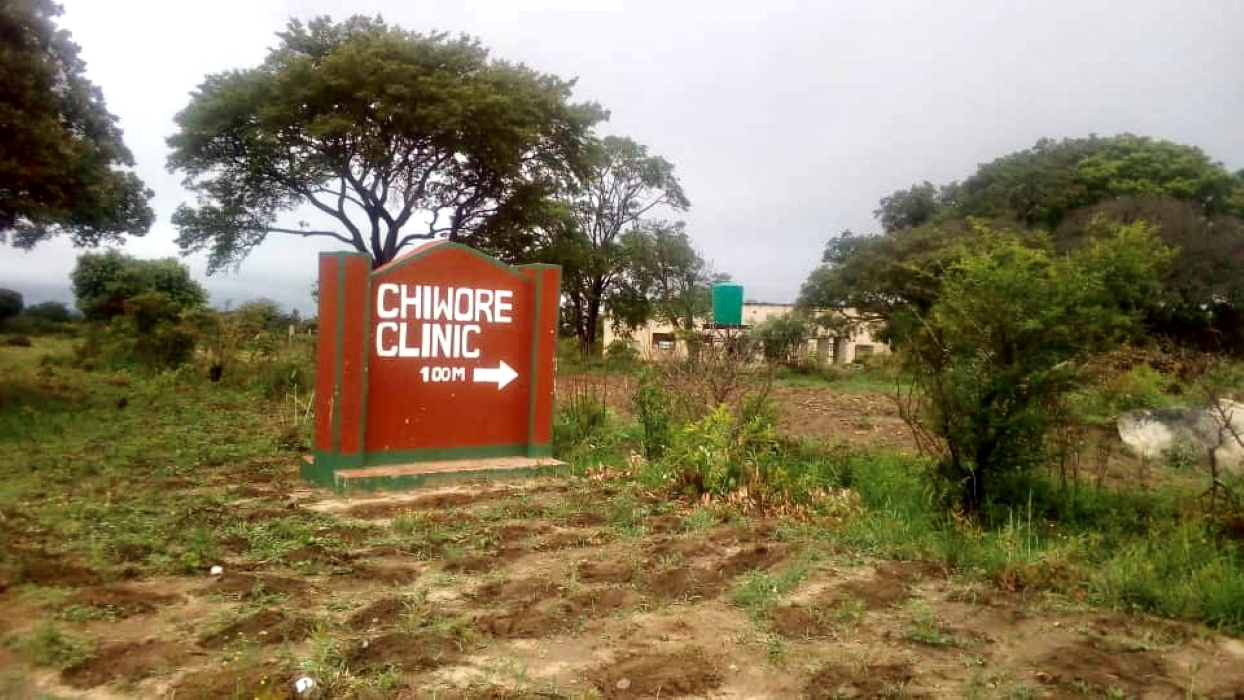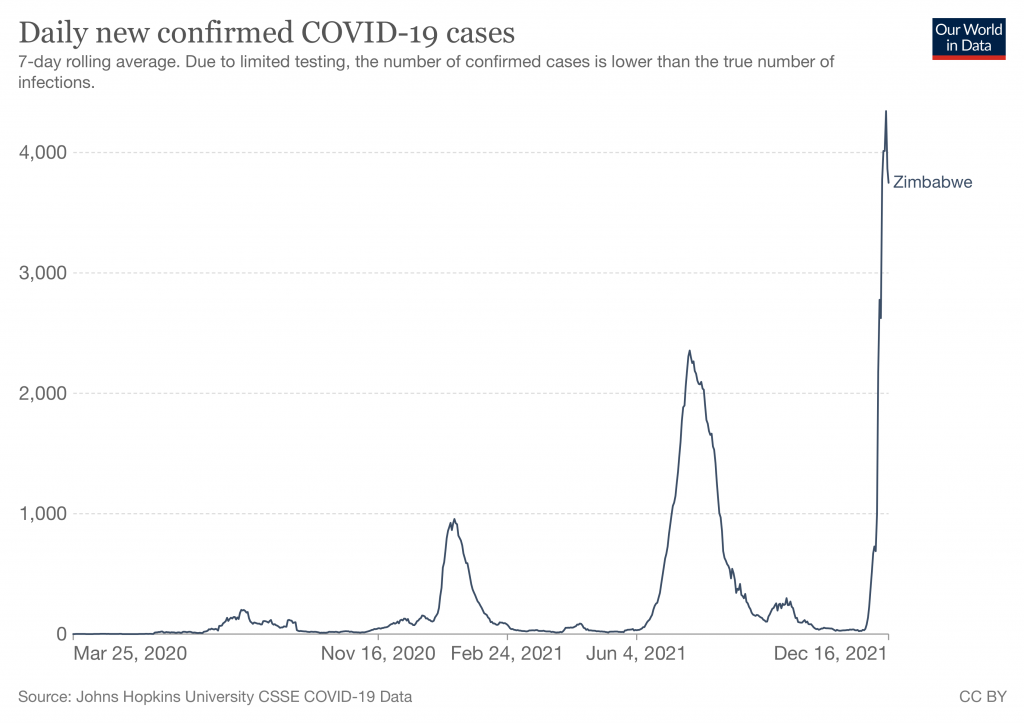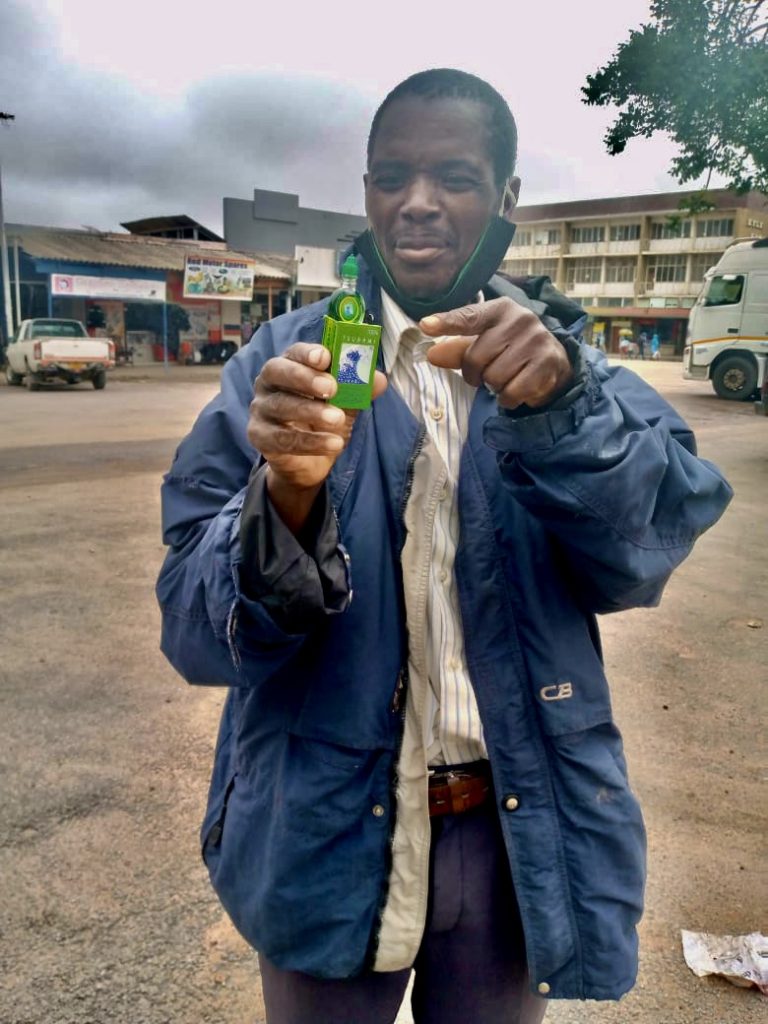
This post was written by Ian Scoones and originally appeared on Zimbabweland on December 20, 2021.
It was just a few weeks ago that our last report noted the arrival of a new variant identified in South Africa. In the interim Omicron has swept through the country. This initially resulted in panic, with a rush to get vaccinated and the government swiftly responding with further lockdown measures. As someone recalled, “it was like the world was about to come to an end”, so panicked were both officials and many in the population.
The rapid spread is reflected in the case data that is officially reported, but the real figures are massively higher. Across our rural sites, people report that about 50-60% of villagers have been struck down by a virulent ‘flu in the past weeks, suggesting massive under-reporting in official figures.

Just two weeks ago we were hearing reports of a ‘flu in our site in Chikombedzi, in the far south of the country near the border with South Africa. On 5 December, our research team member reported via Whatsapp that many people in the villages had been coming down with ‘flu, but no deaths were being recorded. Since then, the same reports have come from all sites as the variant has spread north and across the whole country.
However so far, just as observed in Guateng in South Africa, which has been the epicentre of the Omicron epidemic, there have been very few deaths. Indeed, in our last review across sites over this past weekend, no local deaths have been reported and the only COVID related burials have been of those who have died elsewhere – all in our Chatsworth site near Gutu, with four bodies returned from South Africa and one from Chiredzi.
Omicron seems to cause a debilitating flu, involving a severe headache, joint aches, body weakness and severe fatigue, together with a running nose. People say it’s like malaria, with hot and cold sweats. It is extremely transmissible and very often whole families are down with it together. Indeed one of our research team members has been suffering from it over the past week, but the whole family has now thankfully recovered. It affects all ages, and vaccinated and unvaccinated people are all affected. However, recovery rates seems extremely good and it lasts about five days, slightly longer for older people.
Rapid spread, rapid learning
While in the first days at the beginning of December people were seriously worried, as they have experienced the disease over the last couple of weeks and been able to treat its symptoms, people have become more relaxed. With such rapid spread, the learning cycle in this pandemic is speeding up. The remedies used in previous phases have all be deployed, but this time the focus on body aches and fatigue has meant new innovations. The long used medication from China called ‘Tsunami’ (an aromatic oil, as shown by Mr Mutoko from Mvurwi below) is in high demand, as it can be applied to joints and even drunk in a tea. Equally, onion compresses are widely used to help with body aches and cold symptoms.

While many have taken up the offer of vaccines (20% fully vaccinated, 27% with at least one dose), few think that this is enough. An interesting argument emerged in discussions across our sites about the importance of having lots of different responses so that new variants can be tackled on many fronts. A single response – just focusing on vaccines as the government is emphasising – is not enough, people argued: “You can be doubled vaxxed even have a booster and still get Omicron… the variant needs many things to fight”. “Treatment responses must be wide and varied and this must include local remedies”, was a wide consensus as expressed in one discussion.
The sharing of remedies and treatment responses has been as rapid as the spread. Those in the border areas near South Africa experienced it first, and shared information about symptoms and remedies to relatives and others elsewhere. Whatsapp messages and Facebook groups are full of advice on how to tackle Omicron. Each family and village has a different set of responses, but the sharing of options is widespread. There are many, diverse prongs of attack. And (so far) it seems to be working.
Major disruptions
With whole families out sick for a week, and with the rapid spread sometimes half a village at a time, this has seriously disrupted the beginning of the farming season. The rains have finally (it seems) come, with steady rain falling over the past days. This is the time to be in the fields to plough and plant, as timing is all. Omicron is causing havoc with farm labour and this may have knock on effects into the harvest. The need for labour for land preparation is heightened this year as many livestock have perished due to January disease (known as cattle COVID locally), and so draft power is scarce.
However, what is causing most disruption and what was the centre of people’s commentaries was the return of lockdowns. People are just fed up. They have no livelihood options, people are poor. Kids have been out of school for months and are really suffering. Social problems are building up. Noone can face another round of lockdowns, especially with what appears to be a mild disease. And for this reason, very few are reporting sickness to clinics with the fear of being quarantined. As someone observed, “getting locked up is worse for you; you don’t have the support of your family, you cannot use your local remedies”.
The politics of control
Perhaps more than in previous phases, or at least with a different accent, there is a political critique of the current response and a demand for freedom and liberty, with an abandoning of a standard, centralised response to the pandemic. “We must learn to live with the disease, just as we have before with AIDS, and so many other diseases”, someone argued. “It’ll always be there, so we need vaccination alongside our own methods”, another said. “Who profits from this very standard way of responding – vaccines, vaccines, vaccines?”, someone asked rhetorically, answering: “it’s the big businesses who make a profit, and the governments who want our resources. A vaccine may be free, but it isn’t really”. People are very aware of the vaccine politics being played out in Africa and they don’t like it. In commentary across sites, there was a widespread critique of the top-down response to the pandemic:
“It’s government, the WHO, corporations who are in control. The powerful. The messages come one-way from them to the masses. We are bombarded with messages and instructions, which require adherence without question.”
The restrictions of endless lockdowns were getting to many: “It’s just don’t, don’t, don’t; it’s terrible for us, we are trying to live. How can we live a life of lockdowns? We are not comfortable with this”. Another informant observed, “We are not scared now of this disease; the only challenge are the lockdowns. We are approaching Xmas, but we cannot do any business, we are stuck.”
Even those enforcing lockdowns are fed up. One police officer commented, “We are tired of this, but we have to enforce the law. We need a compromise”. Lockdowns, as we have discussed before, lead to businesses collapsing and people seeking other forms of income. Corruption and crime are rife. Civil servants have not been paid a living wage for years, so as someone observed “it’s no surprise that people steal and get involved in corrupt practices like the police….It’s the same with the rise in petty crime. People are desperate.”
Collaborative approaches
So what’s the way out of this endless cycle? There were some interesting ideas expressed about ‘living with the disease’ in discussions in our sites during the last week:
“We have to do this together. We cannot have government just saying do this, do that, the top-down control doesn’t work. We have to find a way to discuss. After all it’s us who must ultimately respond to the disease in our own localities”.
A more collaborative approach, taking account of local needs and knowledges, was advocated:
“We have our own ways of dealing with the pandemic, we don’t like being controlled. Those in charge don’t know what we do, let us do it. Yes, we need the vaccinations and the drugs from the clinics, but let’s recognise the many other responses. We have to work together”.
This may be an important lesson for other countries too as a wider social contract emerges about how to deal with what inevitably will be an ongoing response to a disease (or now seemingly a variety of diseases), even as it settles towards an endemic state across the world, with inevitable new variants and new surprises in store.
This is part of a series of reports, starting in March 2020 on the unfolding COVID-19 situation in Zimbabwe. It is based on reports from the field team led by Felix Murimbarimba based in Mvurwi, Chatsworth, Wondedzo, Masvingo, Hippo Valley, Chikombedzi and Matobo.
